Whether you’re a homeowner, renter, or building owner, knowing how to maintain a safe and healthy indoor environment is crucial to the wellness of those spending time inside. Making sure that everything is up to code and there aren’t major issues like gas leaks is a huge part of this responsibility, but there are other important pieces of the puzzle. Having safe indoor air quality and removing contaminants is another aspect that should always be considered. This knowledge base includes understanding what the top cleaning products for mold are and having them at hand in case a situation arises.
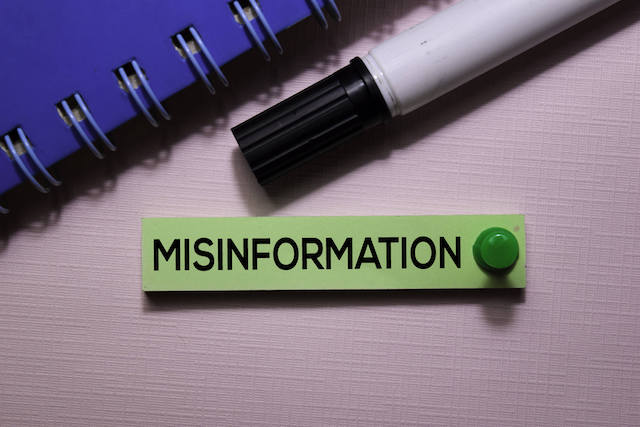
Seems simple enough, right? Unfortunately, with how little mold exposure and the effect our indoor spaces have on health are discussed, this is an often overlooked aspect of maintaining a healthy environment. And that’s not including all of the misinformation out there.
A great example is using bleach on any mold problem. We’ve all heard the saying, "Just throw some bleach on there and you’ll be a-okay." That is absolutely not true. Even the EPA states that this harsh chemical is not the tool you should be using to kick contaminants to the curb. Far too many products say they can be used for mold when really, they’re not an effective solution (at least for now).
So, what should you use? Here are the top 6 products for mold and why they’re the ones you should be using for mold growth and to preventatively remove microscopic contaminants from your environment.
But First, a Lightning Mold Round
Before getting into the right products to use, here’s what it is you’re actually trying to remove and why it’s important to eliminate it correctly. Because knowledge is power!
Mold Growth
Over 100,000 species of mold have been identified so far, and they all reproduce by releasing microscopic spores into the surrounding environment.¹’² These spores will float around, riding the air current to wherever that leads, and land on whatever surface they come into contact with. If that surface has the necessary components for life, these non-living particles will transition into a living mold colony.
As this colony grows, roots develop, anchoring the mold on the surface it’s living on. It’s similar to how a weed puts down roots in your yard. This is a key factor to remember as to why some products do not properly handle mold contamination.
Once the colony is established, it will start up that reproductive cycle, sending more and more spores into the surrounding space. Some species of mold also create microscopic toxins called mycotoxins, adding more particles to the area.³
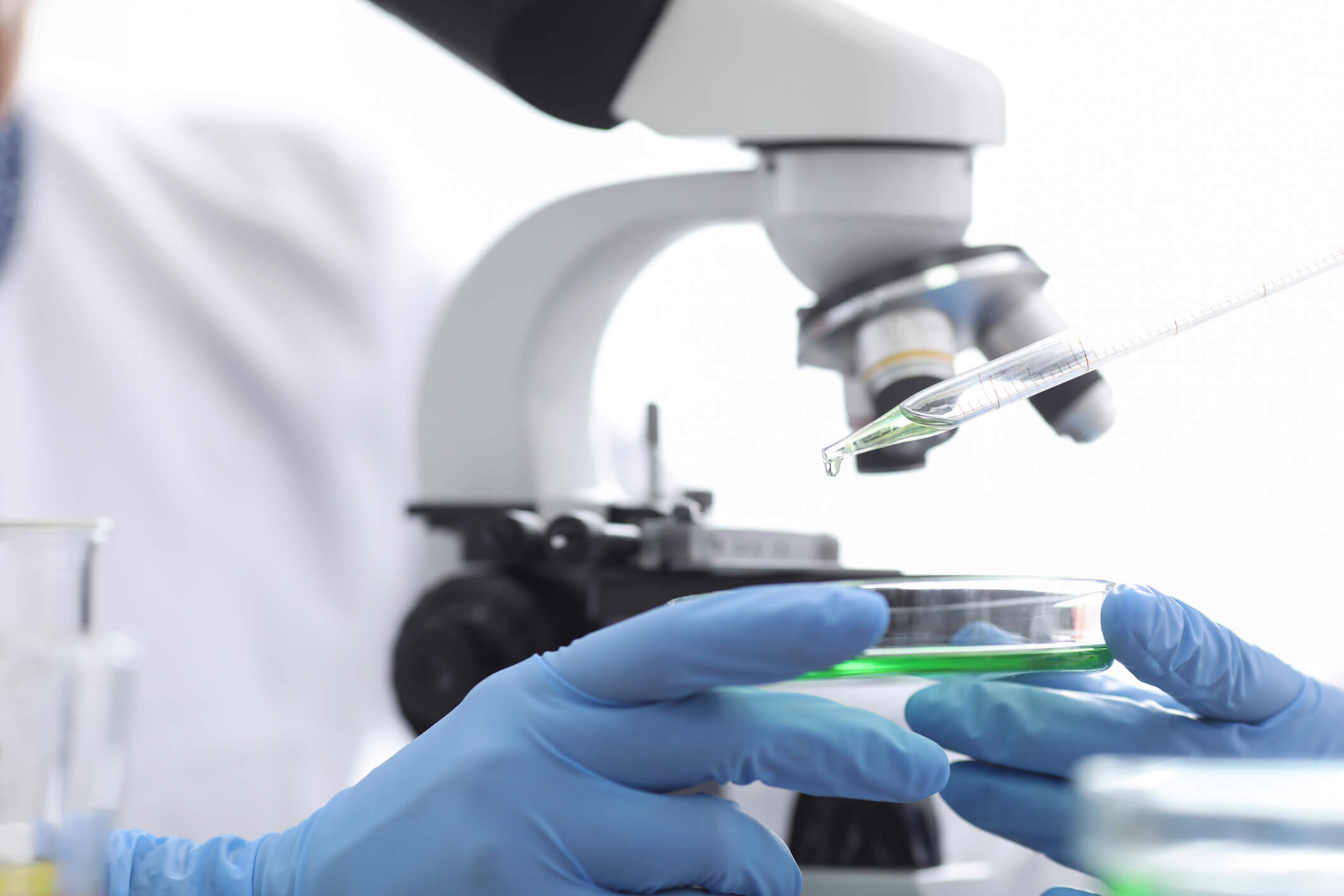
Particle Size
As mentioned above, spores and mycotoxins (and oftentimes bacteria since they grow in the same conditions as mold) are microscopic and are measured in a unit called microns. A micron is 1,000th of a millimeter. Considering that you can fit a million spores on the head of a pin, these particles are seriously small. The EPA classifies them as particulate matter and groups them into two categories.⁴
These two categories are:
- PM10: particles that have a diameter of around 10 micrometers or less.
- PM2.5: fine particles that have a diameter of around 2.5 micrometers or less.
Their small size gives them the ability to zip into small interstitial spaces within a home, grow in hidden areas like drywall, slip deep within porous surfaces like clothing, and exist in a building unknowingly because they’re invisible to the naked eye. This is another key detail to keep in mind when choosing cleaning products for mold.
Keep in mind that these products should be used both for an existing mold problem and to remove any small contaminants that come in from outdoors. Thanks to modern building practices pushing for net-zero energy efficiency, there’s very little airflow between indoor and outdoor environments, meaning that most particles that get inside remain trapped inside until they’re forcefully removed.
That’s why deep cleaning with the correct products is such a crucial part of preventing mold. The fewer particles there are in an indoor environment, the healthier the space is and the lower the chance of a mold spore maximizing an opportunity and starting to grow.

The Health Implications
Another result of their small size is the ability for these particles to be absorbed, ingested, and inhaled into the body.⁵ In a typical situation, you’ll encounter a few mold particles throughout the day. The body will tag them as foreign invaders and send your immune system to get rid of them.
However, indoor mold growth is an entirely different situation. Instead of a couple of particles, most of the spores, mycotoxins, and potentially bacteria are trapped within the indoor space, creating a much different exposure scenario. The immune system will attempt to keep up, but it can get overwhelmed and/or malfunction resulting in a long list of potential adverse health effects and related autoimmune conditions.⁶’⁷’⁸’⁹’¹⁰
The possibility of chronic health reactions is why having the right cleaning products for mold is an important staple of maintaining indoor environments.
What to Look for in Cleaning Products for Mold
There are several reasons why products like bleach are ineffective against mold.¹¹
To eliminate mold properly, you have to:
- Remove any dead particles: Just killing the mold is not enough. Dead mold particles can still trigger adverse health reactions as they are kicked up into the surrounding air, so all particles, whether dead or alive, must be removed.
- Eliminate all contaminants from the environment: A cleaning product should be able to remove spores as well as mycotoxins and bacteria, both of which stick to surfaces and can be difficult to remove. When the cleaning is done, the surface should be as free from particles as possible.
- Take care of the roots: If the roots are left behind, the mold can regrow. It’s similar to removing a weed—you can’t just cut off the top of the plant, you’ve got to pull it up by the roots and all.
And that’s not including ensuring that the water-damaging issue that led to the mold growth in the first place is also resolved.
The cleaning products you use should be able to tick off each of the boxes above. Otherwise, contamination can remain, allowing for adverse health reactions.
The Top 6 Cleaning Products for Mold
These are the best of the best when it comes to removing all of the contamination caused by indoor mold growth and preventing and actively eliminating small particles.
Top Cleaning Products for Mold #1: Benefect Decon 30
Benefect Decon 30 is an excellent cleaning tool for non-porous and semi-porous surfaces, whether removing existing mold or eliminating any microscopic particles from your environment. This is why it's one of the top cleaning products for mold.
There are quite a few positives for Decon 30. Its first gold star is based on its botanical cleansing components. Instead of harsh chemicals like bleach, which can actually lower the indoor air quality, trigger health reactions for individuals who are sensitive, and harm the environment, botanical products utilize natural ingredients to deal with mold and its affiliated contaminants. Decon 30, in particular, uses a botanical active ingredient called Thymol, which is a component of Thyme Oil.
Another element that adds to this product’s ability to handle mold is its unique Optimized Dynamic Chemistry (ODC) surfactant system. These surfactants help remove particles from the surface while the other active ingredients kill the living mold. As mentioned above, pulling particles to the surface is key because if any are left behind, exposure to these contaminants will continue, allowing for adverse health reactions to persist.
Any cleaning products for contaminants worth their weight should understand this and have ingredients that will ensure this happens. So when you come back to wipe the Decon 30 off after letting it sit, only the clean surface will be left behind.
-

HomeCleanse Cleaning
Take your cleaning to the next level buying all the tools we use to keep...
-
Price range: $299.00 through $549.00 Shop Now
Top Cleaning Products for Mold #2: A HEPA Vacuum Cleaner
The filtration portion of the machine is what sets HEPA vacuums apart. While other machines will filter out a majority of smaller particles, they don’t have the capability to stop some of those ultra-fine and microscopic particles like mold spores. The technology behind HEPA filters allows them to filter out and remove smaller particles, instead of just blowing them back into the surrounding environment.
To reach the EPA standard and be qualified as a HEPA filter, they must filter out 99.7% of particles that pass through that are 0.3 microns in size.¹²
With mold spores ranging from 2-4 microns on average, these machines will not only pick up dust and large particles but also these tiny specks as well. The more particles you can remove from your environment, the healthier the space will be.
We recommend the Advance Euroclean GD930 Canister Vacuum Cleaner.
Top Cleaning Products for Mold #3: Microfiber Towels
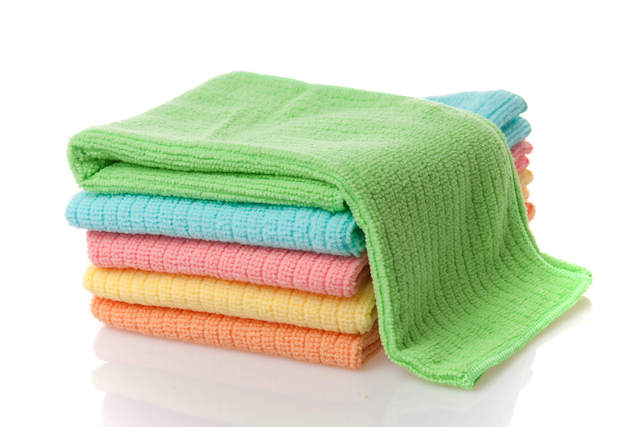
A key component of choosing the right cleaning products for mold is their ability to actually remove them from your indoor environment. Microfiber cloths are an invaluable power tool when it comes to cleaning homes and eliminating tiny particles from your space.¹³’¹⁴’¹⁵
They’re made from polyester and polyamide fibers, which are split into thin threads and then woven together. This tightly intertwined fabric is what gives them their cleaning juju. They’re able to produce static electricity, allowing them to pick up more particles like mold spores and bacteria.
A few additional perks of microfiber cloths include:
- Studies show that microfiber can remove 99% of bacteria, compared to the 30% that conventional supplies can expel. While these super-cloths won’t kill the microorganisms they pick up, they do help remove them from the environment, which is a plus-plus for home health.
- Thanks to the tightly woven threads, microfiber can get into tiny cracks and crevices where small particles like mold spores and mycotoxins can get trapped.
- Microfiber cloths are incredibly absorbent and can hold seven times their own weight in fluid. A huge part of preventing mold is reducing moisture in an indoor environment, so this is another checkmark in their cleaning box.
If you’re using microfiber towels to handle a current mold problem, keep in mind that after use, it’s best to throw the cloth away to make sure all of the contamination is removed. The last thing you want to do is wipe spores, mycotoxins, and bacteria back onto the surfaces of your home.
Top Cleaning Products for Mold #4: EC3 Laundry Additive
EC3 Laundry Additive is a great tool to remove particles from porous surfaces that can be thrown in the wash. As an added bonus, it’s a great tool to use to prevent mold growth in the laundry machine as well, catapulting it to the top cleaning products for mold.
Like Decon 30, EC3 also uses natural botanical ingredients. Their specific cocktail utilizes citrus seed extracts to treat mold and its byproducts. It also features tea tree oil and natural surfactants which help to pull particles from the fibers of porous items and clean them away. To prove EC3’s mold removal ability, Micro Balance hired Real Time Labs to assess the effectiveness of their cleaning products, which found that they are successful in treating contamination.
Its ability to help wash away particles also extends to the washing machine. The components of EC3 can remove spores, mycotoxins, and bacteria, as well as any soap scum present.
Keep in mind that porous items are the most difficult when it comes to eliminating contamination. Thanks to their small size, they can borrow deeply from the fabric that they’re on. Any particles left behind can cause issues, so highly contaminated items can be difficult to completely cleanse. For particularly sensitive individuals, it’s best to throw as many porous items away as possible to be sure the contamination is gone.
Top Cleaning Products for Mold #5: Hydrogen Peroxide
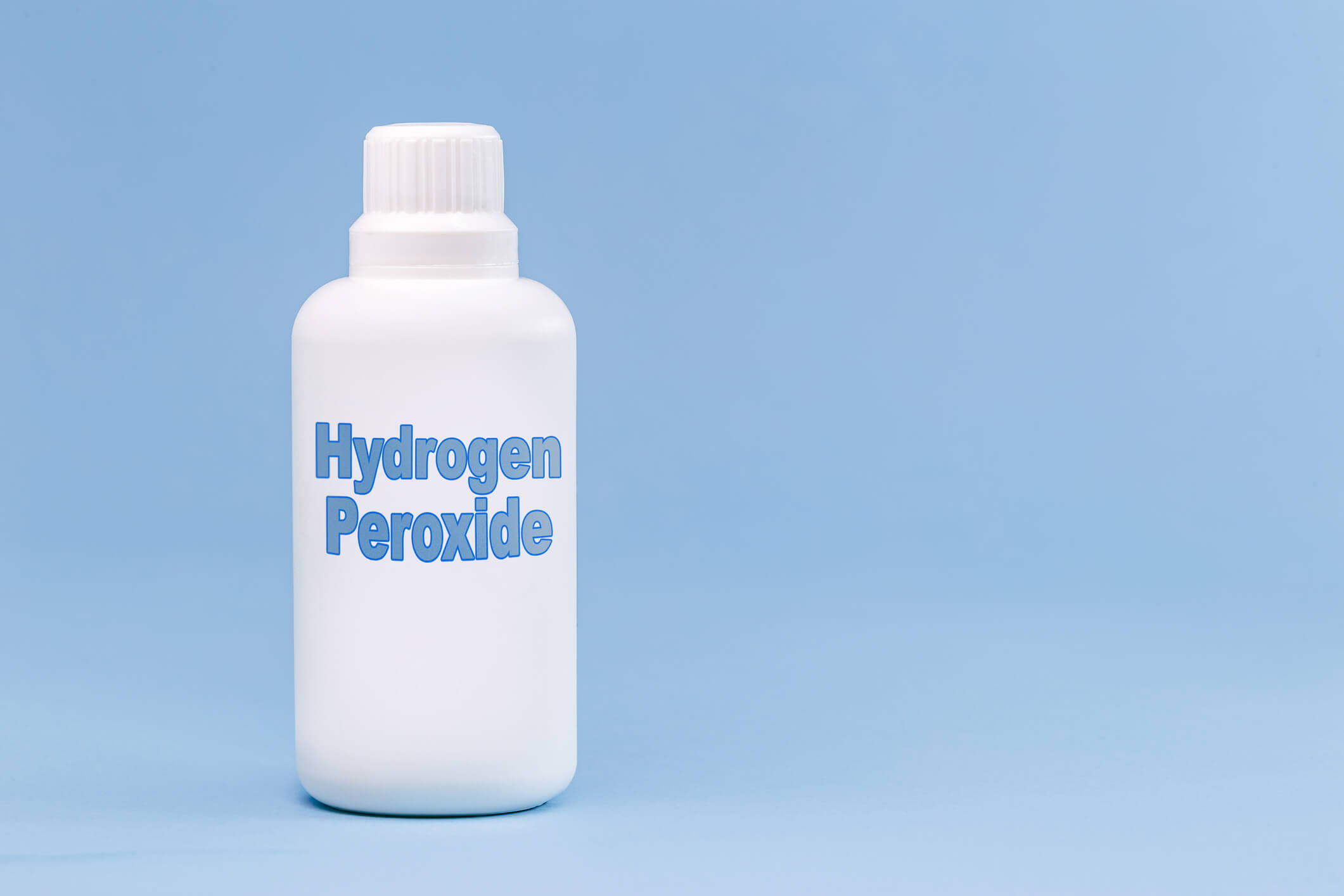
Hydrogen peroxide is a liquid composed of water with an extra oxygen molecule. That additional oxygen atom provides hydrogen peroxide with its powerful oxidation powers that help with cleansing and disinfecting. Oxidation refers to a chemical reaction where an electron is pulled from an atom or molecule, changing its composition.
When it comes to hydrogen peroxide’s disinfectant properties, oxidizing particles such as bacteria and viruses break down the cellular membrane of the microorganisms and essentially kill them.
That’s why it’s such a great multipurpose product to get rid of unwanted contaminants.¹⁶’¹⁷’¹⁸’¹⁹’²⁰
Like with bacteria and viruses, hydrogen peroxide oxidizes the mold once they come into contact, breaking down the cellular structure of the fungus and inhibiting growth. While decomposing the mold, it also lifts particles to the surface, which is key because of the mold colony’s roots. For this very reason, hydrogen peroxide is a great cleaning agent for caulk and grout.
This product also does not create byproducts that are harmful to the environment, and it’s non-toxic, unlike other harsh chemicals like bleach.
Top Cleaning Products for Mold #6: Borax
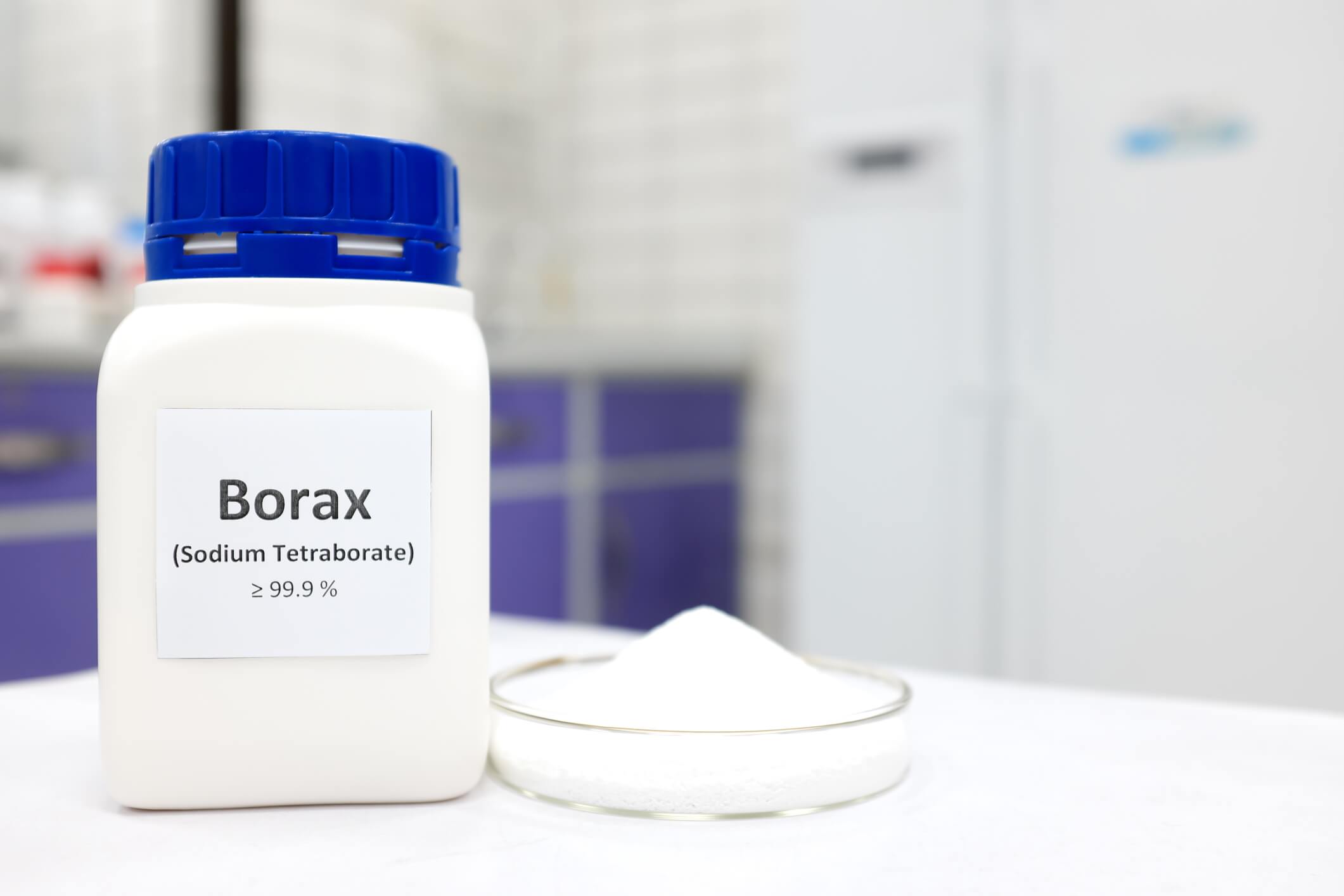
Borax (sodium tetraborate) is a mineral in nature that’s white and powdery. While it’s often used for cleaning tasks such as removing stains or brightening whites in the laundry, that’s not the only thing this cleaner is good for. It can also be used to battle indoor contaminants, securing its place as one of the top cleaning products for mold.
The cleansing power of borax comes from its alkaline pH of around 9.5, so when it's combined with water, it forms a basic solution. Most species of mold prefer an acidic environment between 3.5 and 8.0.
Using borax on indoor contaminants raises the pH levels, making that environment inhospitable. That’s why it’s a disinfectant, biocide, insecticide, pesticide, herbicide, and fungicide when used properly.²¹
As an added bonus, borax is non-toxic and does not emit harmful gases.
An important note is that borax alone is not the golden ticket for mold removal on porous items in the laundry. In order for its magical abilities to work, it’s got to team up with other products such as EC3 Laundry Additive and detergent to pull small particles like mold spores to the surface.
Top Cleaning Products for Mold # 7: EC3 Mold Solution Concentrate
EC3 Mold Solution Concentrate is an essential tool for reducing mold counts on surfaces throughout the home. From countertops and floors to carpets, drapes, and furniture, this non-toxic solution is designed to target spores and bacteria that settle in places you might not even think to clean. Its versatility makes it one of the top products for creating a healthier indoor environment.
Like other EC3 products, the Concentrate uses natural botanical ingredients to do the heavy lifting. Its unique formula relies on a proprietary blend of citrus seed extracts to neutralize mold spores and their byproducts. Independent laboratory testing has confirmed its ability to lower mold levels, giving you of mind without introducing harsh chemicals into your living spaces.
It’s also a safe choice for everyday use. The formula is non-toxic and safe around children and pets, making it ideal for routine cleaning on both washable and non-washable items. Whether you’re working on upholstered furniture, treating a carpet, or addressing small problem spots, EC3 Mold Solution Concentrate can be part of your ongoing prevention and remediation strategy.
Keep in mind, though, that while it’s highly effective at reducing mold counts, surfaces that are deeply or repeatedly contaminated may require professional remediation. Mold is persistent, and exposure can cause health issues. Using EC3 regularly as part of a broader mold management plan can go a long way toward creating a safer, cleaner home.
A Few Extra Tips
Before tackling any mold issue, make sure that you’re prepared with the proper safety equipment and remediation protocols. The last thing you want is to breathe in air that’s full of particles being kicked up while cleansing a space or have the contamination still present after you’re finished.
For more information on preventing cross-contamination, be sure to check out this ERMI video. This information will help you effectively get rid of the mold problem and make sure it doesn’t spread to other areas of your home.
If mold continues to grow quickly in your home, or if you continue to experience chronic symptoms, it’s time to begin building a team of qualified professionals. The best place to start is to hire a mold inspector to assess potential contamination issues within your home. If they find a problem, you’ll need to hire a qualified remediation company that’s up for the job and prioritizes your health.
If you’re looking to stock up on cleaning products for mold, the HomeCleanse shop offers a variety of options to help you get started. From Benefect Decon 30 to full packages including a Contents Cleaning Kit and Home Detox Box, we’ve got everything you need to improve your indoor environment.
Your Safe Space
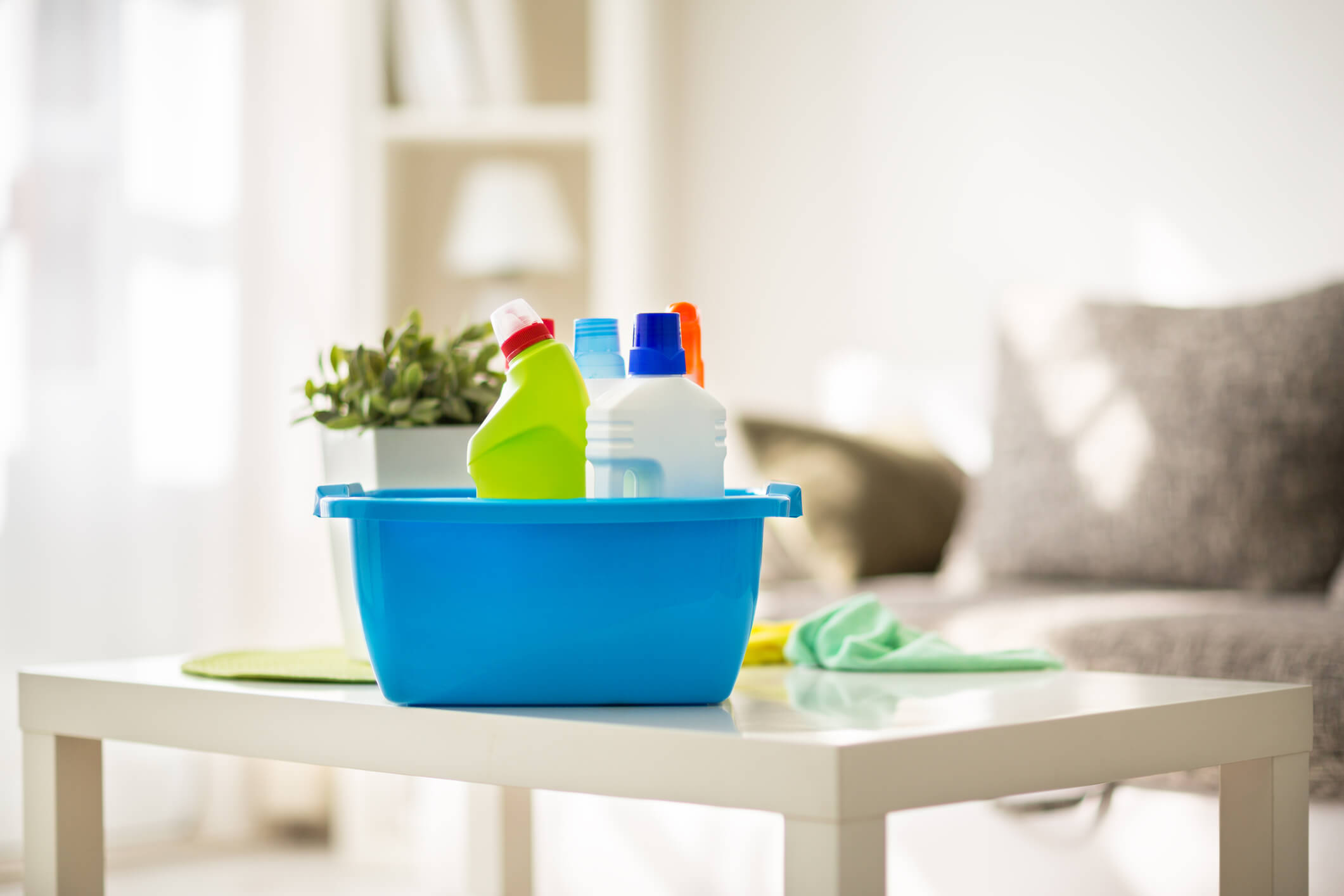
At the end of the day, no one wants to deal with a moldy situation or hang out in an environment full of tiny particles that can trigger chronic symptoms. Our indoor spaces have such a massive impact on our health, yet it’s one of the last places we think of for steps to improve our wellness. It’s a bit of a conundrum.
Building awareness not only of how these spaces and exposures can affect health but also what steps can be taken to improve them is an excellent step toward better wellness overall. A key part of that is making sure you have the right tools for the job! With these in hand, you’ll be well on your way to a safer and healthier indoor space.
Health begins at home.™
- Environmental Protection Agency. (n.d.). Mold. EPA. Retrieved from https://www.epa.gov/mold.
- Centers for Disease Control and Prevention. Basic facts about mold and dampness. Centers for Disease Control and Prevention. Retrieved from https://www.cdc.gov/mold/faqs.htm.
- World Health Organization. (n.d.). Mycotoxins. World Health Organization. Retrieved from https://www.who.int/news-room/fact-sheets/detail/mycotoxins.
- Nchh. (n.d.). Mold. NCHH. Retrieved from https://nchh.org/information-and-evidence/learn-about-healthy-housing/health-hazards-prevention-and-solutions/mold/
- EPA. (n.d.). Health and Environmental Effects of Particulate Matter (PM). EPA. Retrieved from https://www.epa.gov/pm-pollution/health-and-environmental-effects-particulate-matter-pm.
- Curtis, L., Lieberman, A., Stark, M., Rea, W., & Vetter, M. (2004). Adverse health effects of indoor molds. Journal of Nutritional & Environmental Medicine, 14(3), 261-274.
- Bush, R. K., Portnoy, J. M., Saxon, A., Terr, A. I., & Wood, R. A. (2006). The medical effects of mold exposure. Journal of Allergy and Clinical Immunology, 117(2), 326-333
- Fisk, W. J., Lei-Gomez, Q., & Mendell, M. J. (2007). Meta-analyses of the associations of respiratory health effects with dampness and mold in homes. Indoor air, 17(4), 284-296.
- Wild, C. P., & Gong, Y. Y. (2010). Mycotoxins and human disease: a largely ignored global health issue. Carcinogenesis, 31(1), 71-82.
- Environmental and Occupational Health Assessment Program, & Environmental and Occupational Health Assessment Program, & Health Science Section, Mold Basics for Primary Care Clinicians (2009). Hartford, CT; Connecticut Department of Public Health. , H. S. S., Mold Basics for Primary Care Clinicians 1–10 (2009). Hartford, CT; Connecticut Department of Public Health.
- CDC Staff. (2016, September 18). Chemical disinfectants. Centers for Disease Control and Prevention. Retrieved February 17, 2022, from https://www.cdc.gov/infectioncontrol/guidelines/disinfection/disinfection-methods/chemical.html#Hydrogen
- Cleveland Clinic Staff. (2021, December 2). Hydrogen peroxide: How to use it properly. Cleveland Clinic. Retrieved February 17, 2022, from https://health.clevelandclinic.org/what-is-hydrogen-peroxide-good-for/
- ScienceDirect Staff. (n.d.). Oxidation. ScienceDirect. Retrieved February 17, 2022, from https://www.sciencedirect.com/topics/earth-and-planetary-sciences/oxidation
- Zhu, G., Wang, Q., Lu, S., & Niu, Y. (2017). Hydrogen Peroxide: A Potential Wound Therapeutic Target?. Medical principles and practice: international journal of the Kuwait University, Health Science Centre, 26(4), 301–308. https://doi.org/10.1159/000475501
- Chakravarty, P., & Kovar, B. (2013). Engineering case report: evaluation of five antifungal agents used in remediation practices against six common indoor fungal species. Journal of occupational and environmental hygiene, 10(1), D11-D16.
- Chicago
- EPA. (n.d.). Should I use bleach to clean up mold? EPA. Retrieved from https://www.epa.gov/mold/should-i-use-bleach-clean-mold.
- EPA. (n.d.). What is a HEPA filter? EPA. Retrieved from https://www.epa.gov/indoor-air-quality-iaq/what-hepa-filter-1.
- Smith, D. L., Gillanders, S., Holah, J. T., & Gush, C. (2011). Assessing the efficacy of different microfibre cloths at removing surface micro-organisms associated with healthcare-associated infections. Journal of Hospital Infection, 78(3), 182-186.
- What is microfiber? why use microfiber tools for cleaning? Western States PEHSU. (2015, October). Retrieved from https://wspehsu.ucsf.edu/wp-content/uploads/2015/10/FactSheet_Microfiber1.pdf
- Deohs Home: Environmental & Occupational Health Sciences. DEOHS Home | Environmental & Occupational Health Sciences. (2011, November). Retrieved from https://deohs.washington.edu/
- Encyclopædia Britannica, inc. (n.d.). Fungi. Encyclopædia Britannica. Retrieved from https://www.britannica.com/topic/food-preservation/Fungi.
Still Have Questions?
A member of our team is here to help! Click on “Get Started ➤” below to book a consultation with a member of the HOMECLEANSE team. We have a few quick questions that will help us put together a roadmap to solve or prevent all of your mold problems.
Two minutes of your time could lead to better health for you and your family.
Must-Have Indoor Air Quality Tools
-

EC3 Laundry Additive
Add EC3 to every rinse cycle to rinse away mold, bacteria and musty odors from...
-
$23.00 Shop Now -

Intellipure Compact Air Purifier
Small in size, but delivers powerful results, reducing airborne microorganisms like mold, viruses, and bacteria.
-
$649.00 Shop Now -

Intellipure SuperV Whole House Air Purifier
Turn your HVAC into a filtration system, removing 99% of ultrafine particles including airborne mold,...
-
Price range: $2,000.00 through $2,995.00 Shop Now -

HomeCleanse Cleaning
Take your cleaning to the next level buying all the tools we use to keep...
-
Price range: $299.00 through $549.00 Shop Now -

Mold & Bacteria Contents Cleaning
Remove harmful pollutants that accumulate in the dust of your home. (Options available for renters...
-
Price range: $99.00 through $349.00 Shop Now -

EC3 Mold Solution Concentrate
Micro Balance EC3 Mold Solution Concentrate is a natural botanical that removes mold spores, bacteria,...
-
$33.00 Shop Now -

Industry-Leading Intellipure Ultrafine 468
The Intellipure® Ultrafine 468 features our proprietary DFS technology, which traps and eliminates potentially harmful...
-
Shop Now -

The Dust Test
The Dust Test is a comprehensive at-home test that helps you identify mold and toxins...
-
$299.00 Shop Now -

EuroClean 4 Gallon Hepa Vacuum
The Euroclean GD930HSP is a 4 Gallon Dry HEPA Vacuum that meets the EPA's standards...
-
$849.00 Shop Now -

AprilAire E080 Professional Dehumidifier Bundle
Includes all the dehumidifier accessories you will need. Our Aprilaire E080 comes with a drain...
-
$1,524.99 Shop Now
